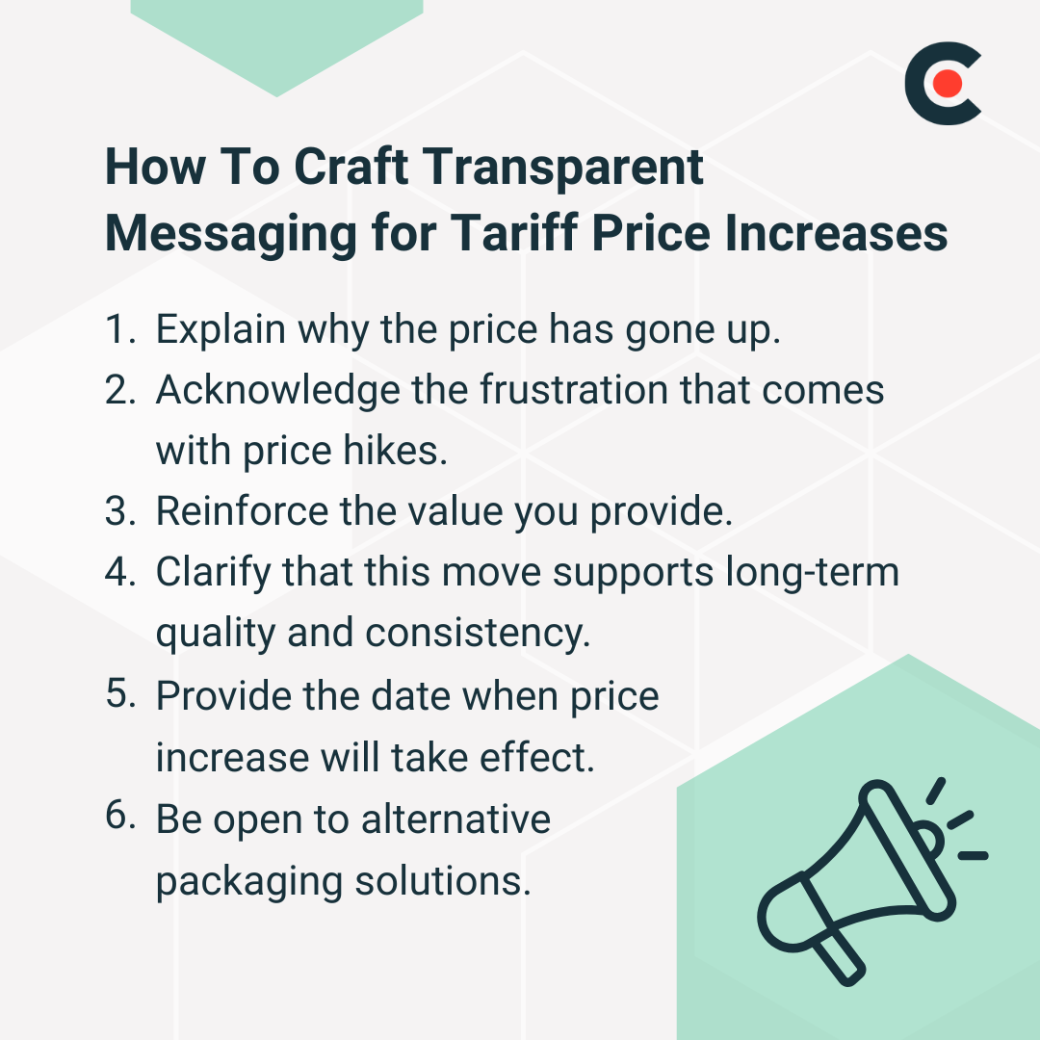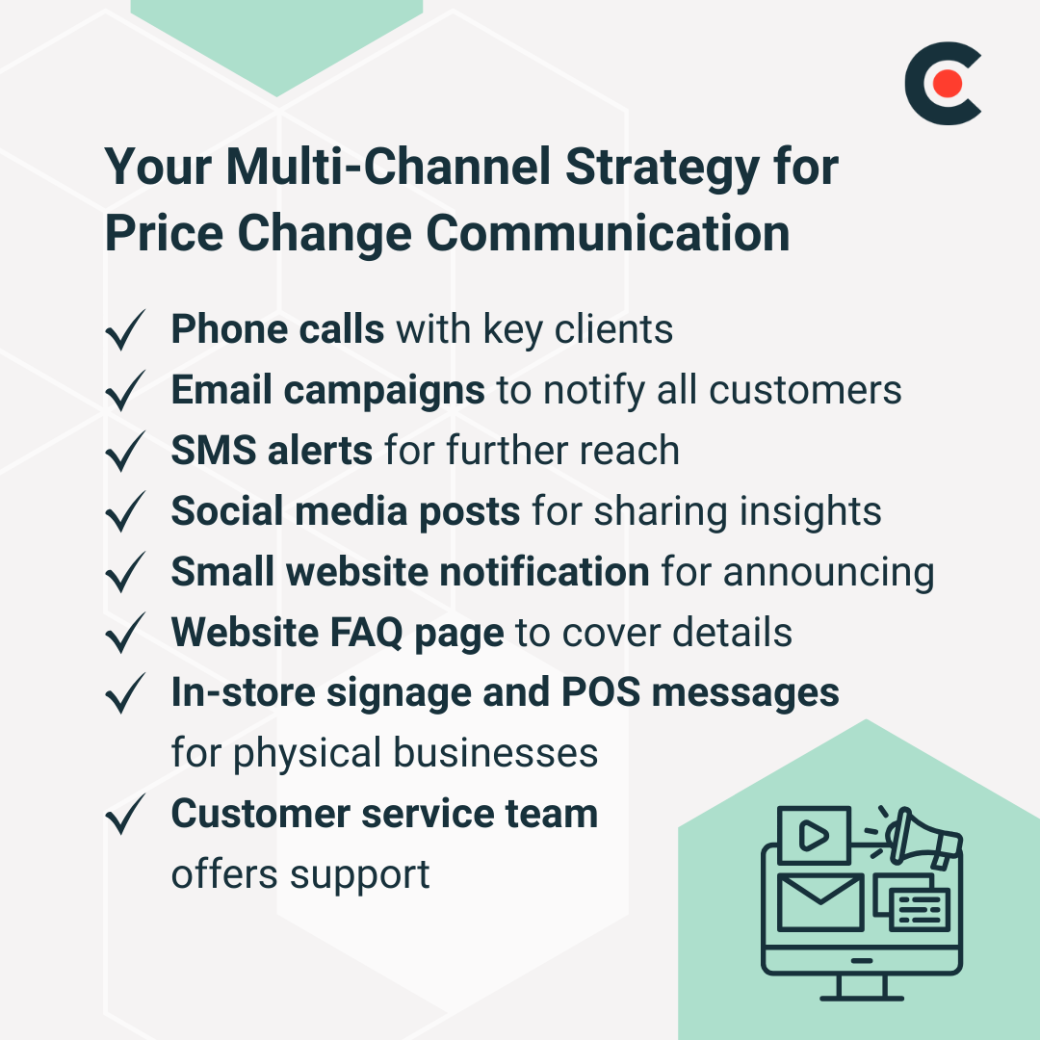

Updated April 29, 2025
Tariff volatility is back in the spotlight, and it's creating real anxiety for U.S. businesses. With talk of new or increased tariffs, some as high as 145%, many companies that rely on imported materials or goods are bracing for impact.
The uncertainty around policy shifts under the Trump administration is forcing business leaders to make tough decisions: absorb soaring costs, cut ad spending, raise prices, or reevaluate supply chains altogether. None of those options are easy, and all of them demand clear, proactive communication with customers.
Looking for a Public Relations agency?
Compare our list of top Public Relations companies near you
However, nobody likes to hear that prices are increasing. Even if the reason makes sense, the reaction can still be disappointment, frustration, or even anger.
Josh Webber, CEO of Big Red Jelly, shares his insights on how you can communicate price increases to your customers. For any business, being transparent with customers is essential to maintain retention and trust. Our guide helps you do just that.
To explain tariffs, we'll start with the basics. Tariffs are taxes placed on imported goods by a government. The businesses importing goods from foreign suppliers, which are U.S. businesses in this scenario, have to pay these taxes.
Suppose an apparel company in the U.S. imports zippers from China. When the U.S. government puts tariffs on zippers imported from China, the U.S. company has to pay these taxes.
These additional costs usually trickle down the supply chain and eventually reach consumers. When tariffs on certain products go up, the cost of bringing them into the country rises, too.
Businesses then increase their prices to compensate for the extra costs incurred. The impact of tariffs on businesses can be significant, as it affects not only their pricing strategies but also their supply chain and profit margins.
Raising prices, especially when the reason involves external factors like tariffs, can feel uncomfortable. However, when you're upfront with your customers, you can soften this blow and even strengthen your relationship with them.
Transparent communication can also make customers feel well-informed. Instead of springing price hikes as a surprise on them, proper communication can prepare them for this change before it happens. Here are some other ways businesses benefit from transparent customer communication regarding price increases.
It's best if the customers hear about the price change from you directly rather than finding out through third-party sources. Plus, it shows that you're not trying to hide anything or take advantage of consumers. Instead, you're being transparent about the reason behind the hike.
A sudden price change with no explanation leaves room for speculation. However, if you're clear about the impact of tariffs, it can help avoid misunderstandings and set the record straight with customers.
Customers want to feel like they're in the loop. When you take the time to explain the situation and how you've tried to manage it, it shows you care about more than just the sale.
People are more likely to accept a price increase if they understand the reasoning behind it. They'll know that you're not just trying to make a profit but have been forced by circumstances to adjust pricing.
When you're breaking the news about the price increase, the message matters just as much as the change itself. You need to be upfront and focused on value to confidently navigate this conversation.
Webber shares that he "wouldn't just spring a price increase on our clients. I'd begin with a proactive, personalized communication campaign." The most important part of your campaign will be the messaging, which should:

We've explained what to include in your messaging, but how will you deliver it? A single platform isn't enough. You need a multi-channel strategy that consists of networks where your consumers are present.
In Webber's words, "A combination of personalized and digital channels is best. [You] want to ensure the message is received clearly and that clients feel valued and informed." However, he also recommends not to "drop the bomb all at once. Start by providing a heads-up about potential changes, then follow up with specific details."
Here's how you can use different channels to announce your pricing change to your audience.

There are several ways to use email to communicate price hikes to customers. You can email them directly to explain the new prices or include a section in your regular newsletter (if you have one).
Webber says that he would "send a formal letter or email explaining the necessity of the price adjustment." When sending this email, use a clear, self-explanatory subject like "Important Pricing Update" so recipients don't ignore it.
You can also personalize the emails to make every recipient feel valued. Pro tip: segment your email list by new customers and loyal consumers to tailor the level of detail and tone accordingly.
For key clients, especially in the B2B space, take the time to schedule a call. Webber shares, "For our larger, longterm clients, I'd schedule calls or meetings to explain the situation in detail."
Since these relationships are critical to your business, it's essential to maintain a personal touch and communicate any changes or updates directly. Answer their questions and handle their concerns empathetically.
While not ideal for direct announcements, social media can help frame the impact of tariffs in a broader context. Webber explains that social media is "less effective for direct price change announcements, but useful for sharing industry insights or general updates related to market conditions."
You can post short updates to explain the "why" behind the change. Instead of lengthy text posts, use infographics or visuals to make complex topics easy to understand.
Be active in the comment section and your direct messages. Answer people's questions and offer them additional resources or information to build trust with them while gathering feedback.
Webber recommends, "For broader announcements, a website update or blog post can provide context and information." You can add a visible banner or pop-up on your site's high-traffic pages so that the majority of visitors can see it.
However, don't make the banner overly large or intrusive. Its messaging should be clear and transparent, letting visitors know that prices are increasing. Link to another page where they can learn more about the hike.
To cover more details, create an FAQ section on your website. Website users can go there to get answers to their questions and concerns regarding the price increase.
You can also send brief SMS alerts to customers about price changes. Include links to the full announcement where they can learn more. Keep your message short yet informative to capture the customer's attention and prompt them to click the link.
Businesses with physical locations can post signs near the entrances and checkout areas to let customers know prices are increasing by a certain date. You may also offer printed handouts or QR codes that link to your website or FAQs.
Just like SMS alerts, keep the message short and simple. Direct visitors to a team member in the store or your website for more information.
Your customer support team should be well-versed in price changes. Webber recommends equipping your "account managers and client-facing staff with the knowledge and tools to effectively communicate these changes."
All support reps should be aligned on messaging and handle customer queries empathetically while reinforcing your brand's value provision. They should also reference social media posts, FAQ pages, emails, or newsletters where the price change is discussed.
Webber adds that you should "ensure all communication is documented for clarity and consistency."
Every word you say counts when facing a sensitive situation like a price increase. One wrong move and you risk confusing or upsetting your customers.
A public relations agency can help communicate with your consumers in such situations. They know how to make your messaging clear and empathetic while protecting your brand's reputation.
A public relations agency can craft your messaging, manage media relations, monitor consumer sentiment, and plan a strategy for managing a crisis if it occurs. They can also guide you in selecting the right timing and channels for your message.
These experts also emphasize long-term value to your customers. Plus, they help you avoid words that might sound unclear or defensive.
The communication around price increases with your customers should be transparent and empathetic. Don't leave consumers in the dark, and let them know why the price hike has taken place.
Other takeaways of this guide include:


